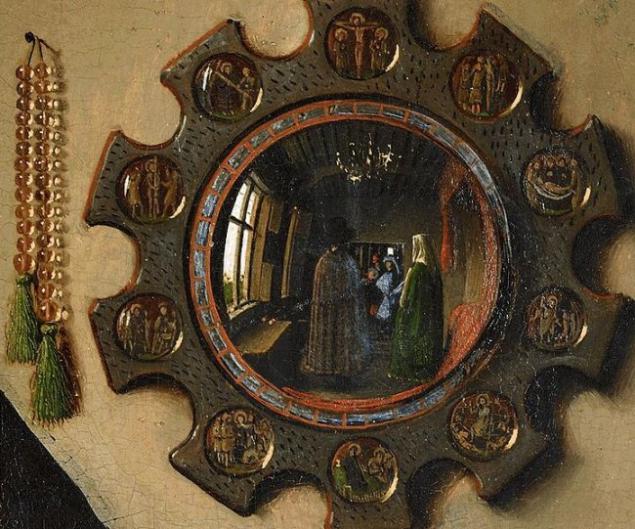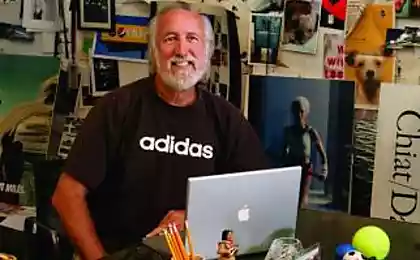657
This scientist was able to solve the mystery that hides the painting of the Renaissance. I have no words!
Every person, who is studying art or interested in him, knows that century XIV-XV were critical for painting. At that time, a significant improvement is necessary drawing skills. If you compare the works of this period with the previous, it seems that artists began to draw sharply at times better. This sudden change in the trend in painting worried minds at all times, and it seems that only now we were able to get closer to unraveling close.
One of the people who are interested in this issue, was an art critic and the artist David Hockney. The man could not ignore this phenomenon and obsessed with learning problems. Once he saw the work of Jean Auguste Dominique Ingres, after increasing them by a Xerox. That appeared before his eyes, it was a big surprise for Hockney. Additionally, the paintings realism impressed even the tiniest details, the scientist also said that looks unusual panache and reminded him of paintings by Warhol, who used the technique of projecting an image onto the canvas and its further delineation.

Here Hockney came to the conclusion that there must be Ingres used a special device that allowed him to endure incredibly realistic proportion to the paper. This device is a structure with a prism, which is mounted at the front, for example, to the plate. Thus, when the artist closes one eye, he saw his picture, and when the other - real image.
Such a camera lucida appeared in 1807, although mention of it date back to 1611 year. Perhaps artists used other optical device called a "pinhole camera"? After all, this device known to man since the days of Aristotle. He was like a dark room, which through a small hole penetrating light. Similarly, in the room arose projection of what was in front of the hole, but upside down. The image was a very fuzzy, and high-quality lenses, which could save the situation, did not yet exist.
Hint left us Jan van Eyck through his painting "Arnolfini Portrait».

The painting was only in 1434, but still full of small details and very realistic. Just look at the candlestick. Such a draw would have been difficult even now. B>

Based on the picture itself, the scientist came to the conclusion that a great artist of accuracy was achieved through a concave mirror, which is convex in the picture looks like.

Size clear, focused part of the projection is about 30 square centimeters - that this was the size of the head on the set of portraits of the Renaissance.

Painters while well paid, and there is nothing strange in the fact that many details of the operation were kept a closely guarded secret. The artists were more favorable to the customer thought they were able to draw such a masterpiece without any help.
Due to the fact that the camera obscura mirrored, almost all the people depicted in the paintings of that period are left-handed.

Since the focus of sometimes gets only part of the image, often suffered proportions when he tried to move. After the photo appeared, the artists had fallen from his shoulders a heavy load. Now responsible for realism photographers. This incredible discovery of David Hockney was a huge step forward not only for art and artists, but also for humanity as a whole, because the scientist was able to answer the question that everyone was asking myself ever - why Renaissance paintings are realistic? Share this discovery with your friends!
www.youtube.com/watch?v=JKbFZIpNK10
One of the people who are interested in this issue, was an art critic and the artist David Hockney. The man could not ignore this phenomenon and obsessed with learning problems. Once he saw the work of Jean Auguste Dominique Ingres, after increasing them by a Xerox. That appeared before his eyes, it was a big surprise for Hockney. Additionally, the paintings realism impressed even the tiniest details, the scientist also said that looks unusual panache and reminded him of paintings by Warhol, who used the technique of projecting an image onto the canvas and its further delineation.

Here Hockney came to the conclusion that there must be Ingres used a special device that allowed him to endure incredibly realistic proportion to the paper. This device is a structure with a prism, which is mounted at the front, for example, to the plate. Thus, when the artist closes one eye, he saw his picture, and when the other - real image.
Such a camera lucida appeared in 1807, although mention of it date back to 1611 year. Perhaps artists used other optical device called a "pinhole camera"? After all, this device known to man since the days of Aristotle. He was like a dark room, which through a small hole penetrating light. Similarly, in the room arose projection of what was in front of the hole, but upside down. The image was a very fuzzy, and high-quality lenses, which could save the situation, did not yet exist.
Hint left us Jan van Eyck through his painting "Arnolfini Portrait».

The painting was only in 1434, but still full of small details and very realistic. Just look at the candlestick. Such a draw would have been difficult even now. B>

Based on the picture itself, the scientist came to the conclusion that a great artist of accuracy was achieved through a concave mirror, which is convex in the picture looks like.

Size clear, focused part of the projection is about 30 square centimeters - that this was the size of the head on the set of portraits of the Renaissance.

Painters while well paid, and there is nothing strange in the fact that many details of the operation were kept a closely guarded secret. The artists were more favorable to the customer thought they were able to draw such a masterpiece without any help.
Due to the fact that the camera obscura mirrored, almost all the people depicted in the paintings of that period are left-handed.

Since the focus of sometimes gets only part of the image, often suffered proportions when he tried to move. After the photo appeared, the artists had fallen from his shoulders a heavy load. Now responsible for realism photographers. This incredible discovery of David Hockney was a huge step forward not only for art and artists, but also for humanity as a whole, because the scientist was able to answer the question that everyone was asking myself ever - why Renaissance paintings are realistic? Share this discovery with your friends!
www.youtube.com/watch?v=JKbFZIpNK10
25 weird things since the Soviet Union, which will introduce the current generation to a screeching halt.
No, it's not Photoshop! It's amazing how makeup can change a person's appearance ...























